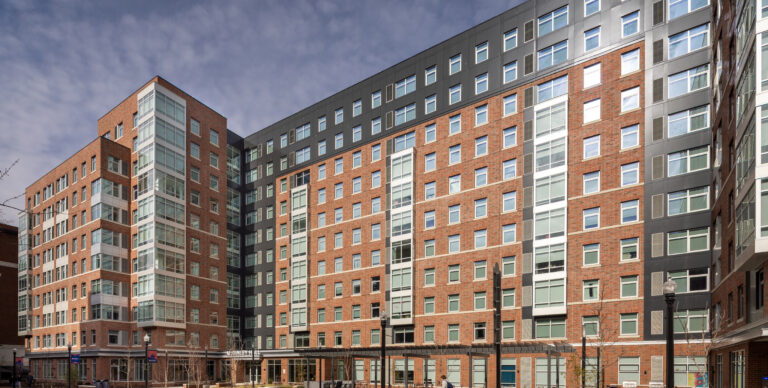Austin’s Life Sciences Sector is Heating Up, Are you Ready?

In recent years, Austin has captured the national spotlight as a prosperous technology hub, home to tech trailblazers like Tesla, Google, and Meta—but the progressive Texas city has another exciting sector heating up —its maturing life sciences market. Companies like Abbott Labs, Agilent, and Thermo Fisher Scientific are already established and growing in the Austin market, but now large national life sciences developers have started scooping up campuses and quickly repurposing them for life sciences operations. Their wide exposure to Bio-Pharma end users, a lot of them current tenants at other locations around the country, will help expand the Austin market with attractive lease rates these companies don’t see in their major life sciences markets.
In the last three years, the city’s life science employment has increased nearly 74%, and it is expected to continue to grow 6.5% annually through 2025, according to research conducted by international real estate services giant Newmark. The same report shows healthy venture capital investment, up more than 47% in the first half of 2022.
The city is certainly on the road to becoming a leading market for life sciences, but to expand this sector, Austin must build a critical mass of this highly specific real estate to host major brands and support scaling start-ups. The city currently has only 1.6 million square feet of life sciences real estate, significantly smaller than other expanding markets like Raleigh, New Jersey, Philadelphia, and Los Angeles, which each have more than 10 million square feet of space. Developers have a great opportunity to build density in an effort to meet Austin’s rapidly emerging market demand.
Tapping into Austin’s talent pool
Companies are flooding to the state of Texas to take advantage of its pro-business environment. The state offers attractive income and corporate tax rates, lower cost of living, and lower cost of commercial real estate and construction. For example, lab space is about one-third of the cost of other more well-established life sciences clusters. In the Austin market lab space leases around $30-$40 dollars per square foot annually, where you’d see Boston or San Francisco between $90-$100 for similar space. In Austin, life sciences companies are able to capture those business benefits of operating in Texas, blended with a young progressive culture that appeals to people and companies moving from coastal regions, where most of the leading life science hubs are located.
Austin’s biggest benefit, however, isn’t in appealing to outside workers, but rather its deep well of existing talent. CBRE’s 2022 Life Sciences Research Talent report ranked the city 18 among the top 25 life sciences markets in the country, noting its critical mass of highly educated professionals and concentration of researchers.
The university system is the backbone of life sciences talent. Texas is home to 18 colleges and universities offering degrees in life sciences programs. In Austin, the recently founded Dell Medical School at the University of Texas at Austin has 200 graduate students enrolled in biochemistry, cell and molecular biology, and microbiology programs, and Texas A&M Health Science Center College of Medicine’s Round Rock campus provides clinical training in a variety of medical fields.
Innovation hubs are also bringing talent into the market. The University of Texas and Austin Community College both operate life science innovation programs to cultivate talent, foster business growth, and provide first-generation lab space to early-stage start-ups.
If you build it, they will come
The Austin market is currently a hub for bioscience and biotech companies focused on clinical trials and diagnostics. In fact, 61% of Austin’s life sciences market falls within these fields. However, to match the depth of its tech sector, the city is hungry to attract household names like Pfizer and Bayer and grow a stronger presence of pharmaceutical manufacturers. Although the market doesn’t currently have any anchor tenants of this magnitude, Austin is a major contender for that business. The city is already topping lists of prospective locations for life sciences expansion and when it lands its anchor brand, that important domino falls, and similarly sized companies follow. This formula is similar to the rapid growth that Austin’s technology industry saw over the last 20 years, so there is precedent for this expectation.
To win the business of established life sciences brands and support Austin’s emerging life sciences sector, the city needs to expand its supply of ground-up and second-generation manufacturing and lab space. This provides a huge opportunity for developers willing to absorb some risk by entering the market early in its growth cycle.
There are already major developments underway that align with these needs, including the 800,000-square-foot Parmer Labs property that was recently acquired by Alexandria Real Estate Equities, Carlin’s 1 million square feet of life sciences repurposing of Highpoint 2222, along with the redevelopment of the Highland Mall into ACC’s incubator facility and the 17-story Innovation Tower developed by the Dell Medical School. These projects represent a significant advancement for the market’s ability to attract large and scaling life sciences companies. These projects are the first major developments in Austin and they will help to prove out the market and pave the way for other developers and life sciences end users to establish operations in Austin.
Location is another consideration. Austin is still a mid-sized city and developers must strategically place new facilities in areas that can support a life sciences cluster. Austin’s Eastern Corridor off I-35 has the opportunity to be built out for larger-scale life sciences developments and surrounding suburbs like Round Rock and Cedar Park are targeting life sciences campuses to create new jobs in their communities. These markets have the space to accommodate companies and their employees, and they are ramping up their utility infrastructure to provide the baseline requirements that life science companies need for heavy industrial applications with infrastructure expansion on city water, sewer, and power capacity.
The AEC industry has had their ear to the ground, building excitement about this projected local growth, and they are rigorously looking outward to bring in the life science talent they need to design and construct these types of facilities. Texas leads the nation in fastest annual jobs growth rate, once again breaking its all-time record in 2022, with employers adding more than 33,000 jobs in November alone. The state also continues to attract new residents at a record pace, welcoming 470,000 new residents since July 2021, making it the fastest-growing state and the second largest with over 30 million residents.
As owner’s representatives, we work closely with developers to assess each of these components, create plans to manage and mitigate risk to ultimately build facilities that will meet a biotech or pharmaceutical company’s customized project needs. By partnering early and planning for the long term, developers can enter this market just as it takes flight, and with sound investment and management strategy, positioning themselves for decades to come in one of the hottest markets in the country.
Multifamily Hotelization: Busting Myths, Supporting Realities
Several myths surround the idea of hotelization in the multifamily sector. In response, ApartmentBuildings.com reached out to apartment experts to explore—and bust—many of those incorrect assumptions.





